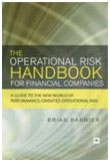The Handbooktakes a performance-driven approach to managing risk to business objectives. For board members with responsibilities for strategy, resource allocation and leadership, The Handbook’s design is important because the performance-driven approach is attuned to change and complexity in the dynamic business environment, understanding how a business works to create value, asking “what if?” and watching for warning signs. It draws on business leadership in competitive awareness, strategy and operational excellence. This is in stark contrast to control/compliance type approaches the draw on audit methods.
Insight for board members is enriched by a panel of six board members, opening with a forward by Marshal Carter, former CEO of State Street and chairman of the NYSE.
The Handbook is organized around the 5+2 Step Cycle for managing risk to performance objectives. The 5+2 Step Cycle:
- Provides consistency and integration across all sources of risk to performance from the economy to competition to products to information technology
- Fosters alignment throughout an organization to improve strategy execution
- Enablessimultaneous change in risk methods and culture to make change more enduring. This is done through an emphasis on scenario analysis – the heart of managing risk.
The Handbookis unique because:
- It’s not just about modeling and a few basic tools derived from regulatory requirements. Instead, it looks at management of risk to products and operations across industries, professional disciplines and history to help risk leaders become aware of the entire landscape of proven experience, not just their conference room.
- It’s not just about compliance. Instead, it looks to operations as part of performance -- managing risk to return for shareholders and other interests (e.g., guarantee funds).
- It’s not content to look at risk in segments or silos, instead it takes a systems approach.
- It’s not just about ops risk leaders sharing war stories at a conference. Instead, it introduces a panel of six financial institution board members who “get” risk management and provide their perspectives throughout the book to encourage/demand more from ops risk to meet the needs of a company in a dynamic world.
- It’s not a semi-random collection of tips and tricks. Instead, it is grounded in a risk management process flow tailored to financial companies from a range of proven experience. Then, tools to help at each step.
The Handbook is available widely, including:
